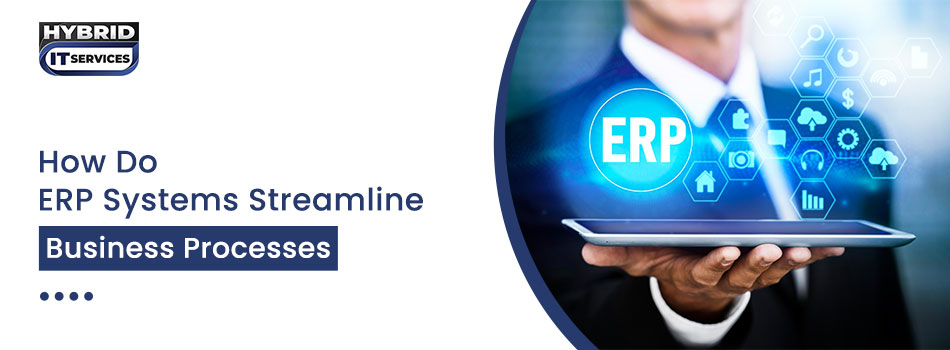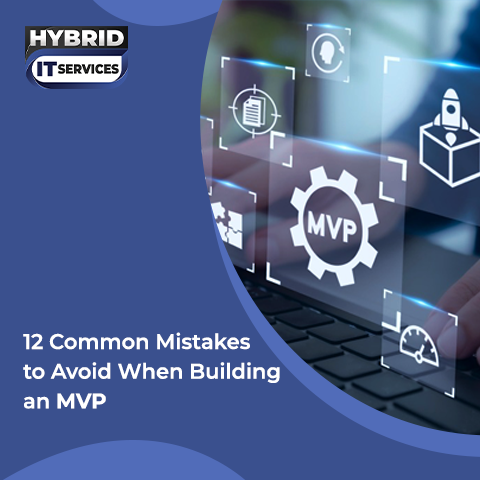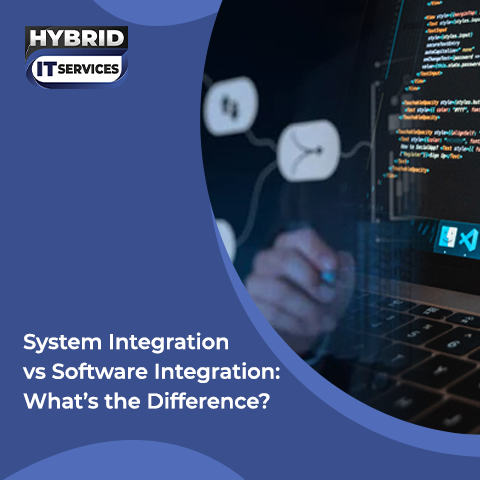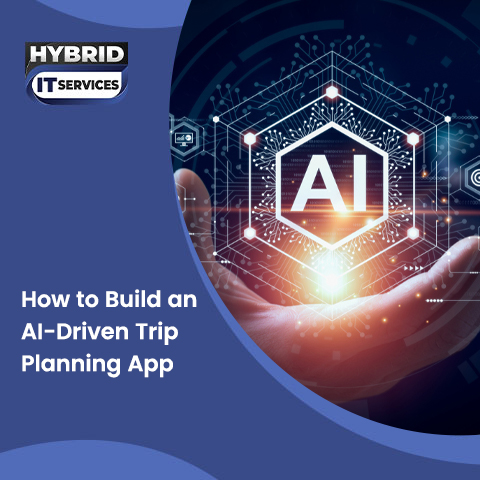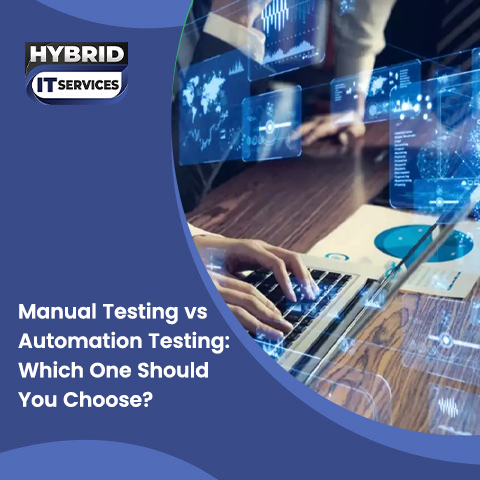In competitive business environment, companies of all sizes are constantly seeking ways to improve efficiency, reduce costs, and enhance their decision-making capabilities. One of the most effective tools for achieving these goals is an Enterprise Resource Planning (ERP) system. By integrating various business processes into a single unified system. ERP systems help organizations streamline operations, improve accuracy, and foster collaboration across departments. At Hybrid IT Services lets discuss how ERP systems work and the numerous ways they can enhance business processes.
What is ERP Systems?
Enterprise Resource Planning (ERP) systems are comprehensive software platforms designed to manage and integrate the core functions of a business. These functions typically include finance, human resources, supply chain management, manufacturing, and customer relationship management (CRM), among others. An ERP system allows for the seamless flow of information across these various functions, providing a unified view of the business operations and facilitating better decision-making.
Key Components of an ERP System:
Business process ERP is comprised of various modules, each designed to manage specific aspects of business operations. Here’s a detailed look at the core components of an ERP system:
1- Finance and Accounting
ERP business processes Manages financial transactions, including accounts payable, accounts receivable, general ledger, budgeting, and financial reporting.
2- Human Resources (HR)
Handles employee information, payroll, benefits, recruitment, performance management, and training.
3- Supply Chain Management (SCM)
ERP business process Manages procurement, inventory, order processing, logistics, and supplier relationships.
4- Manufacturing
ERP software development Oversees production planning, scheduling, quality control, and product lifecycle management.
5- Customer Relationship Management (CRM)
Manages customer data, sales, marketing, customer service, and support.
6- Project Management
ERP software development Tracks project planning, execution, resource allocation, and performance.
7- Sales and Marketing
Manages sales orders, quotations, sales forecasting, and marketing campaigns.
Explore our Comprehensive Guide to ERP Software Development to understand the intricacies of building an effective ERP solution for your business.
How ERP Systems Streamline Business Processes:
ERP (Enterprise Resource Planning) systems have revolutionized the way businesses operate by integrating various functions into a single, unified system. This integration streamlines business processes, improves accuracy, and enhances decision-making capabilities. Here’s an in-depth look at how streamline business processes:
Centralized Data Management
ERP Streamline business by providing a centralized database where all business information is stored and accessible. This centralization eliminates data silos, ensuring that everyone in the organization has access to accurate and up-to-date information. It reduces redundancy and ensures consistency across the board. For example, sales, finance, and inventory departments can all view the same data, leading to more synchronized and informed decisions.
Improved Efficiency and Productivity
By automating routine and manual tasks, ERP systems significantly enhance operational efficiency. Tasks such as data entry, order processing, and inventory management are automated, reducing the likelihood of human errors and freeing up employees to focus on more strategic activities. This automation also accelerates processes, allowing businesses to respond more quickly to customer needs and market changes.
Enhanced Reporting and Analytics
ERP systems streamline business with powerful reporting and analytics tools that provide insights into various aspects of the business. These tools enable managers to generate detailed reports on sales performance, financial health, inventory levels, and more. With real-time data and customizable dashboards, decision-makers can quickly identify trends, forecast future performance, and make informed decisions that drive growth and profitability.
Better Inventory Management
For businesses involved in manufacturing or retail, effective inventory management is crucial. ERP systems provide real-time visibility into inventory levels, helping businesses maintain optimal stock levels and avoid overstocking or stockouts. Features like automated reordering and inventory tracking enhance accuracy and efficiency in the supply chain, leading to cost savings and improved customer satisfaction.
Streamlined Supply Chain Operations
ERP systems streamline business process by supply chain operations by integrating procurement, inventory management, and logistics. They enable businesses to monitor the entire supply chain in real-time, from supplier management to order fulfillment. This visibility helps in identifying bottlenecks, reducing lead times, and improving supplier relationships. As a result, businesses can deliver products to customers faster and more reliably.
Improved Customer Relationship Management
A robust CRM component within an ERP system helps businesses manage customer interactions more effectively. It provides a 360-degree view of the customer, including purchase history, preferences, and interactions with the company. This comprehensive view enables personalized marketing, improves customer service, and enhances the overall customer experience. Satisfied customers are more likely to become repeat buyers and brand advocates.
Regulatory Compliance and Risk Management
ERP systems help businesses adhere to regulatory requirements by providing tools for compliance management. They ensure that financial reporting meets industry standards and government regulations. Additionally, ERP systems enhance risk management by providing better control over financial processes and reducing the risk of fraud. They also include features for audit trails and documentation, making it easier to track compliance-related activities.
Enhanced Collaboration and Communication
ERP systems foster better collaboration and communication across departments. With a unified platform, employees can easily share information and collaborate on projects. Features like integrated messaging, shared calendars, and project management tools enhance teamwork and ensure that everyone is aligned with the company’s goals and objectives. This improved collaboration leads to more cohesive and effective operations.
Scalability and Flexibility
ERP systems are designed to grow with your business. They offer scalability, allowing you to add new functionalities and users as your business expands. This flexibility ensures that the ERP system continues to meet your business needs over time, providing a long-term solution that can adapt to changing market conditions and business requirements.
Cost Savings
Although implementing an ERP system requires an initial investment, the long-term cost savings can be substantial. By streamlining processes, reducing errors, and improving efficiency, ERP systems help lower operational costs. Businesses can achieve better resource utilization, reduce waste, and optimize inventory levels, all of which contribute to cost savings.
ERP systems streamline business process with the help of ERP software development services, integrating various functions into a single system.
Conclusion
ERP system streamlining is powerful that can transform the way businesses operate. By integrating various functions into a single system, ERP solutions streamline processes, improve efficiency, and provide valuable insights that drive informed decision-making. Whether it’s managing finances, optimizing the supply chain, or enhancing customer relationships, ERP systems offer a comprehensive solution that can significantly enhance business performance. Investing in an ERP system is a strategic move that can provide a competitive edge in today’s dynamic business environment.

